
Bangladesh’s Only Travel Guide You Need For A Great Trip in 11 Easy Steps
- Destinations Asia
Cruisit Team
- May 13, 2022
- 0
- 4630
- 71 minutes read
Bangladesh’s Background
Bangladesh was formed in 1971 after Bengali East Pakistan broke away from its union with West Pakistan. During the monsoon rainy season, almost one-third of this impoverished country floods, impeding economic progress.
As a result, Bangladesh may not come to mind as a tourist destination, yet it has a lot to offer. If you come here, you will be one of the few tourists, which means the country remains untouched.
Bangladesh is located in South Asia and shares borders with the Bay of Bengal, India, and Myanmar. Bangladesh may not be the most popular tourist destination, but those who visit are rewarded with a lovely culture and kind people. Despite the fact that Bangladesh is an impoverished nation, the people warmly welcome foreign visitors into their homes with true hospitality and altruism. You will be met with curiosity rather than an ATM here, and Bangladeshis will crowd around you, asking questions or simply looking. Everywhere you go, you’ll be likely welcomed with tea.
The primary industries of the nation include ready-made garments, textiles, pharmaceuticals, agriculture, shipbuilding, and fishing. The culture dates back thousands of years, and the nation has plenty to offer visitors. It boasts the longest beach in the world, a massive mangrove forest, and various indigenous villages. There is also fascinating wildlife for those who are willing to seek for it.
If you’re planning a long journey, you won’t be bored in Bangladesh, since it has a six-season subtropical monsoon climate. Winter lasts from December to January, spring from February to March, summer from April to May, monsoon from June to July, autumn from August to September, and late autumn from October to November. Although severe cyclones are rare, when they come, they are devastating to the country’s people, infrastructure, and electrical grid.
Situated on the deltas of multiple large rivers, Bangladesh gets endless flows from the Himalayas. This results in a flood-prone low-lying plain. The Ganges joins the Jamuna, then the Meghna, before emptying into the Bay of Bengal. Bijoy is the highest mountain in the country, rising 1,231 meters above sea level. Agriculture is an important business in the nation since the rivers keep the land fertile.
“The country of 700 rivers, six seasons, and numerous mosques and temples will keep you on your toes.“
Bangladesh is South Asia’s greenest jewel, crisscrossed with rivers and filled with a rich culture just waiting to be explored by adventurous travellers looking for less-traveled areas and more real experiences. This little country, sometimes overlooked by visitors, is located in Southern Asia, sharing borders with the Bay of Bengal to the south, but its major section is virtually completely encircled by the Republic of India – literally around: to the west, north, and east.
Bangladesh is a country of highly friendly people, and you can anticipate a warm welcome if you happen to stumble into this area of the world, despite visitors forgetting and dismissing its many charms, assuming it to be off the beaten path by virtually any measure.
The Bengal delta, the world’s biggest delta, covers a substantial portion of the country. Bangladesh is also famed for its 700 rivers and 8,046 kilometers (5,000 miles) of interior waterways. It also has hills with lush green forests in the northeast and southeast, as well as various islands and a coral reef. Among the natural wonders to be found here are the world’s longest unbroken sea beach, Cox’s Bazar Beach, and the Sundarbans, the world’s biggest mangrove forest.
It is a country with incredible biodiversity, with vegetation, animals, and wildlife found nowhere else, including the endangered Bengal tigers that serve as the national animal.
It is an impressive Muslim-majority country. Everyone follows their religion’s peace norms. However, poverty, indiscipline, and corruption are sore points in Bangladesh. Nonetheless, the majority of the people in this nation are extremely nice, helpful, well-behaved, civilized, gentle, courteous, and humane. This can only suggest that while foreigners should be cautious when visiting there, it is quite unlikely that they would encounter any problems.
Despite its closeness to India, Bangladesh is a largely undiscovered nation. While it has many parallels with India, Bangladesh has its own distinct history and culture. It’s also quite accessible, with frequent bus, rail, and aircraft connections from Kolkata and other Indian towns. This one-week Bangladesh itinerary encompasses everything from Dhaka’s hustle and bustle and Chittagong’s verdant lakes to Bandarban’s pure mountain air and Cox’s Bazaar’s gorgeous beaches. There are several activities to do in Bangladesh, and the kindness of the natives will astound you.
If you enjoy Indian food, you’ll love Bengal cuisine, which is wonderful and extremely similar to Indian cuisine. Did you know that Bangladesh has the world’s longest stretch of beach? It is however not entirely flat; towards the northeast, there are hills with colorful tribes and exquisite tea plantations. Then there are the breathtaking rivers that crisscross the nation, and in the south, the famed Sundarbans National Park, where tigers seek sanctuary from human encroachment. There are culturally intriguing places all around the country for those who are interested.
- Feel the craziness of Dhaka, Bangladesh’s capital.
- Wander about Shankharia Bazaar.
- On the Buriganga River, rent a small boat.
- Visit the state-of-the-art National Assembly Building.
- Take a leisurely boat to Barisal or Khulna to see river life.
- In the Sundarbans National Park, try to spot a tiger.
- Explore the World Heritage-listed mosques in and around Bagerhat.
- Cox’s Bazar has the world’s longest unbroken sand beach.
- From the same beach in Kuakata, watch the dawn and sunset over the Bay of Bengal.
- Hike through the Chittagong Hill Tracts’ tribes and forests.
- Drink some tea and relax in the calm air of a Srimangal tea estate.
- St. Martin’s Island, Bangladesh’s sole coral island, has a beautiful beach.
- Discover Bangladesh’s long-gone Buddhist heritage at the World Heritage site of Somapuri Vihara, formerly the largest Buddhist monastery south of the Himalayas.
- To enter Bangladesh, you will need a visa, which you may obtain either at home or at an embassy/consulate in a nearby country. Visas-on-arrival are also available in select situations for certain nations.
- Because you were a part of the previous British Empire, English is quite widely understood and you should be able to get by with it.
- Transportation is simple, with several alternatives ranging from buses to trains to boats, and in the city, a cycle rickshaw will carry you a long way for very little.
- Bangladeshis occasionally gaze because visitors are so uncommon that they are a curiosity. Prepare to be gazed at like you’ve never been stared at before!
- Pollution is an issue in Dhaka and other major cities.
- Bangladesh is an Islamic country, yet it is tolerant and liberal, with a sizable Hindu minority. Still, dress conservatively and refrain from drinking in public.
- The rainy season lasts from late May until early October. October through February is the best time to visit Bangladesh.
- Even in sites where prices are indicated as “set,” shopping in Bangladesh necessitates some haggling.
Crime & Scams
Bangladesh has a very high rate of both petty and violent crime, with little street crime accounting for the vast bulk of it. It might be a safe place to visit if you remain in particular areas of the nation that are safe from the dangers of the city’s streets. It’s advisable to maintain some level of vigilance while in Bangladesh.
Because pickpocketing is common in Bangladesh, never put all of your money in the same area at the same time, keep it out of easy reach, and constantly be aware of your surroundings. Handle your valuables with extreme caution, and never carry cash in your handbag or pocket.
Armed robbery is the second most prevalent crime in Bangladesh, as it is in the United States and many other nations, so keep your valuables hidden (don’t flaunt it), practice caution, and avoid the streets at night if at all possible. Kidnappings of adults and children are growing more common, yet the majority of these crimes do not only target visitors.
Scams are all too common in Bangladesh, and it is unsurprising that some people may take advantage of any scenario to try to squeeze money from you, due to the poverty in the nation. When hailing a cab, make sure they utilize the meter or negotiate the fare before entering. Check everything twice and discuss it in advance.
To summarize, this means you should keep your wits about you and employ common sense, such as not going somewhere alone after dark. Start screaming and drawing attention to yourself if you find yourself in a perilous situation.
Avoid taking a rickshaw, CNG,, or taxi from one area to another, especially at night, as they are common targets for gunpoint robberies.
Health
Bangladesh’s healthcare system is extremely decentralized, with for-profit enterprises, non-governmental organizations (NGOs), the national government, and foreign charity groups in charge. Quality of care is poor in both public and private services, with assessments of provider care reporting low levels of professional knowledge and inadequate application of skills in practice. However, Bangladesh still has several excellent hospitals that offer diagnostics and treatment to people and visitors who can afford it.
Before every journey, make sure you are up to date on all routine vaccinations. Among the key recommended vaccines globally are chickenpox (Varicella), diphtheria-tetanus-pertussis (DTP), influenza (flu), measles-mumps-rubella (MMR), polio, and shingles.
When visiting Bangladesh, you are not required to purchase travel medical insurance. However, it is always essential to have comprehensive medical coverage when traveling because you never know what you could encounter while overseas.
Shoulder Seasons
From March through April These months are often regarded as the best time to visit Bangladesh. During March and April, the country undergoes a transition season, which results in milder and more comfortable weather conditions.
High (Peak) Season
Because the months of June to August are the busiest for tourism in Bangladesh, hotels and other accommodations may be more expensive than normal. The month of July is the busiest for tourism in Bangladesh, followed by December and October. Hotel and airfare prices will be highest during these months, but you may save if you book early in advance. The months of December to February are the second busiest in Bangladesh.
Off-Season
Tourists are unlikely to visit Bangladesh in November, making it the beginning of the off-season. Those who are willing to travel around these periods will most likely find it to be the least expensive month.
March through May marks the spring period and is the slowest season for tourists, making it ideal for bargain hunters.
By Plane
You may fly into Bangladesh from several neighboring countries. Major airlines including as Emirates and Qatar, as well as smaller local carriers, service Dhaka International Airport (the capital). Dhaka is the key transportation center and international entrance point. You may go throughout Bangladesh from Dhaka!
Biman Bangladesh Airlines connects Dhaka with 27 major cities across the world, including Abu Dhabi, Amsterdam, Athens, Bangkok, Calcutta, Kuala Lumpur, London, Rome, Tokyo, Frankfurt, Hong Kong, Jakarta, Seoul, and Delhi.
Other international carriers that fly to and from Dhaka besides Biman include Air France, Japan Airlines, Kuwait Airlines, Indian Airlines, Lufthansa, British Airways, United Airlines, and many more.
By Train
You can purchase Bandhan Express or Maitree Express train tickets and travel to Bangladesh by train if you have secured a Bangladeshi visa. There will be no need to stop at the border for customs or immigration procedures. Even if you are qualified for a visa on arrival, you must first get a visa. In addition to the Bandhan Express train from Kolkata to Khulna, there is also the Maitree Express train from Kolkata to Dhaka that takes around 10 to 12 hours.
The Bandhan Fast train is a weekly international express rail service that connects the Indian city of Kolkata with the Bangladeshi city of Khulna. It is the second modern, completely air-conditioned passenger rail link connecting the Indian states of West Bengal and Bangladesh.
Overland By Car
Foreigners are now restricted from traveling to and from Russia by road due to security concerns in Dagestan and Chechnya. Due to continued tensions between the two nations, the border with Armenia is blocked. The most common road route is from Tbilisi, Georgia, through Lagodekhi and Balakan. Astara is the most convenient border crossing from Iran.
By Bus
The bus is the most common form of transportation between India and Bangladesh. Take a direct bus from Kolkata to Dhaka (duration: 10-12 hours) and from Agartala to Dhaka (duration: 4-5 hours) at extremely low costs.
By Car
Bangladesh may be reached by road from Kolkata through the Benapole or Basirhat crossings. If you want to go to Dhaka, there are direct buses from Kolkata and Agartala. I had to travel to Khulna.
By Boat
River cruises between India and Bangladesh are now available from Kolkata, which is a first because river transportation was previously only available for internal transportation within the country. You may, however, now book a river voyage from India to Bangladesh. The cruise departs from Kolkata and travels to Dhaka via Guwahati. The river trip follows the Ganga, Padma, and Brahmaputra.
Chittagong, Mongla, Payra, Dhaka, Pangaon, Barisal, Narayanganj, Aricha Ghat, and Ashuganj are the nine ports in Bangladesh for yacht owners. There are other docking places in addition to the major commerce ports. However, before going on your vacation, double-check which ones you may dock at and what the conditions are.
When traveling inside Bangladesh, rickshaws, auto-rickshaws (also known as CNGs), normal taxicabs, simple cycles, air-conditioned buses, trains,, and airlines are utilized in addition to rickshaws. Auto-rickshaws are also a green mode of transportation because they run on compressed natural gas (CNG), thus their name.
By Plane
Bangladesh Airlines’ 7 internal routes connect Dhaka with Chattogram, Jessore, Cox’s Bazar, Rajshahi Saidpur, and Sylhet.
By Train
Starting from Dhaka, the Bangladesh Railway provides an efficient service to tourist destinations such as Chattogram, Sylhet, Khulna, Mymensingh, Bogra, Rajshahi, and Dinajpur. The inter-city Express Service provides low-cost transportation to and from major cities.
Bangladesh Railway, which is run by the government, offers an effective service throughout the country. If at all, the intercity Express Service is offered to and from major cities. Local trains have lower fares.
By Car
Dhaka and other major cities provide private automobile rental services.
Be aware that road conditions away from Dhaka are frequently bad, and four-wheel-drive cars are needed for rugged trips. Outside of big cities, roads are rarely lit.
By Taxi
The government-owned Bangladesh Parjatan Corporation (BPC) operates a fleet of air-conditioned and non-air-conditioned automobiles, microbuses, and jeeps. They also provide tourist transfers between Dhaka airport and major city sites or hotels.
By Bus
Road transport in Bangladesh is mostly a private sector enterprise that operates primarily on domestic routes. The rates are among the lowest in the world. From Dhaka’s Gabtoli, Saidabad, and Mohakhai bus terminals, express and nonstop services to major cities are available. The Bangladesh Road Transport Corporation (BRTC) also operates a nationwide bus network. They just began daily direct bus services from Dhaka to Calcutta via Benapole and Jessore.
Green Line, Shyamoli, SilkLine, and Shohagh are among the companies. Accidents are still prevalent, but you will be far more comfortable than on the decrepit local buses.
By Boat
Country-made boats are the most common mode of transportation in rivers and rivulets. These transport a big number of passengers and goods. Bangladesh’s topography is characterized by over 250 rivers that run primarily north-south. The majority of the nation is covered by the alluvial flood plain generated by these rivers. A launch or steamer will ply for trade anywhere there is a river and a hamlet. A trip on the Rocket Steamer service from Dhaka (Sadarghat) to Khulna, the gateway to the Sundarbans, is an unforgettable experience.
By Metro
Line-6 is a 20-kilometer elevated metro rail line between Uttara and Motijheel in Dhaka in Bangladesh, going through the congested suburbs of Pallabhi and Mirpur and featuring 16 stops and a maintenance depot. By 2030, the Metro is expected to span around 130 kilometers. The Mass Rapid Transit Line-4, which runs from Dhaka’s Kamalapur to Narayanganj, and MAN Siddique have both been completed. The fare ranges from about 0.20 USD to over 1 USD.
Grameen, Skitto, Robi (Axiata), Airtel, Banglalink, and Teletalk are the six mobile service providers in Bangladesh. A Bangladeshi SIM card may be obtained via Grameenphone Robi, Airtel, Banglalink, and Teletalk stores, as well as Skitto pick-up sites. They can also be purchased via third-party retailers (but not for tourists). SIM cards are also available at Dhaka-Hazrat Shahjalal International Airport and Chittagong-Shah Amanat International Airport. Prices begin around 100 BDT (1.2 USD) and average about 200 BDT (2 USD)
You also have the option of purchasing a prepaid eSim card like from Airalo, SimCorner, or Nomad. The companies provide data-only plans to put on a phone that is eSim ready, so make sure your phone is compatible. It is also possible to opt-in for a WiFi Hotspot from Solis. Check before you travel because they service certain destinations. Airalo by far has the most coverage of almost 180 countries.
Local Internet & WiFi
While Bangladesh’s Internet speed is not among the fastest in the world, it has greatly improved in recent years. You will most likely be able to connect to the internet via wifi at your hotel or hostel, since most of them are equipped with it.
Top Places in Bangladesh

Lalbagh Fort
Lalbagh Fort is an unfinished 17th-century Mughal fort complex located in the southwestern portion of Dhaka, Bangladesh, before the Buriganga River. Mughal Subahdar Muhammad Azam Shah, a son of Emperor Aurangzeb and subsequently emperor himself, began building in 1678 AD. Shaista Khan, his successor, did not finish the construction, although remaining in Dhaka until 1688. The fort was never finished and remained vacant for a long time. Much of the complex has been rebuilt and now sits across from contemporary structures.
Tara Mosque
The Star Mosque also known as Tara Masjid is a mosque in the Armanitola neighborhood of Dhaka, Bangladesh. The mosque is ornately designed and embellished with blue star decorations. Mirza Golam Pir erected it in the early part of the nineteenth century.


Lawachara National Park
Lawachara National Park is Bangladesh’s largest national park and wildlife reserve. The park is located in the northeastern area of the nation in Kamalganj Upazila, Moulvibazar District. It is part of the 2,740-hectare West Bhanugach Reserved Forest. Lawachara National Park encompasses roughly 1,250 acres of semi-evergreen and mixed deciduous woods. The site was designated as a national park by the Bangladesh government on July 7, 1996, in accordance with the Wildlife Act of 1974.
Sixty Dome Mosque
Bagerhat, Bangladesh’s Sixty Dome Mosque is a place of worship and a landmark of Bagerhat’s Mosque City, which is a UNESCO World Heritage Site. It is the biggest mosque from the Sultanate period in Bangladesh. Khan Jahan Ali, the administrator of the Sundarbans during the Bengal Sultanate, erected it. It has been called “one of the most spectacular Muslim structures in South Asia.”


Dhakeshwari Temple
Dhakeshwari National Temple is a Hindu temple in the Bangladeshi capital of Dhaka. Because it is state-owned, it is known as Bangladesh’s “National Temple.” The name “Dhakeshwari” means “Dhaka Goddess.” Since the Pakistan Army destroyed Ramna Kali Mandir during the Bangladesh Liberation War in 1971, the Dhakeshwari Temple has become the most prominent Hindu place of worship in Bangladesh. It is also Bangladesh’s largest Hindu temple. This temple is one of the well-known Shakti Peethas in the Indian Subcontinent. The main jewel of the site had fallen here.
7-day Itinerary in Bangladesh
Day 1
Arrival at Dhaka and sightseeing
As an Islamic country, Bangladesh is home to a variety of interesting mosques, and you’d be guilty if you didn’t visit at least one. After you’ve arrived, unpacked your things, and freshened up, begin your journey by visiting Baitul Mukarram, Dhaka’s national mosque. It also happens to be the world’s tenth largest mosque. There are no admission costs and the museum is open every day.
After seeing the mosque, take a cab or auto-rickshaw to the Armenian Church in Old Dhaka. Built in the 18th century, the church provides a look into another world – the lives of the city’s Armenian community a few centuries ago – and is aesthetically intriguing.


Feel the city’s spirit on the banks of the Buriganga River, few minutes from the Armenian Church. Dhaka Sadarghat, also known as the Sadarghat Port, is one of the world’s largest river ports, with over a hundred thousand passengers passing through every day. It offers a rough, active glimpse of Dhaka life and, despite the chaos, may be an unexpectedly romantic spot to watch the sunset.
A one-hour river excursion on one of the bigger wooden boats will cost roughly Tk 30 – 40, while a ride in a tiny rowboat would cost around Tk 5 per person.
Finish the evening by visiting the lively and historic New Market open-air shopping complex, where you can buy anything from textiles, jewelry, food, and gadgets to sarees, readymade gowns, and footwear at a variety of rates.
Other sights to see are Ahsan Monjil, the Museum of the Father of the Nation, and Dhakswari Temple.
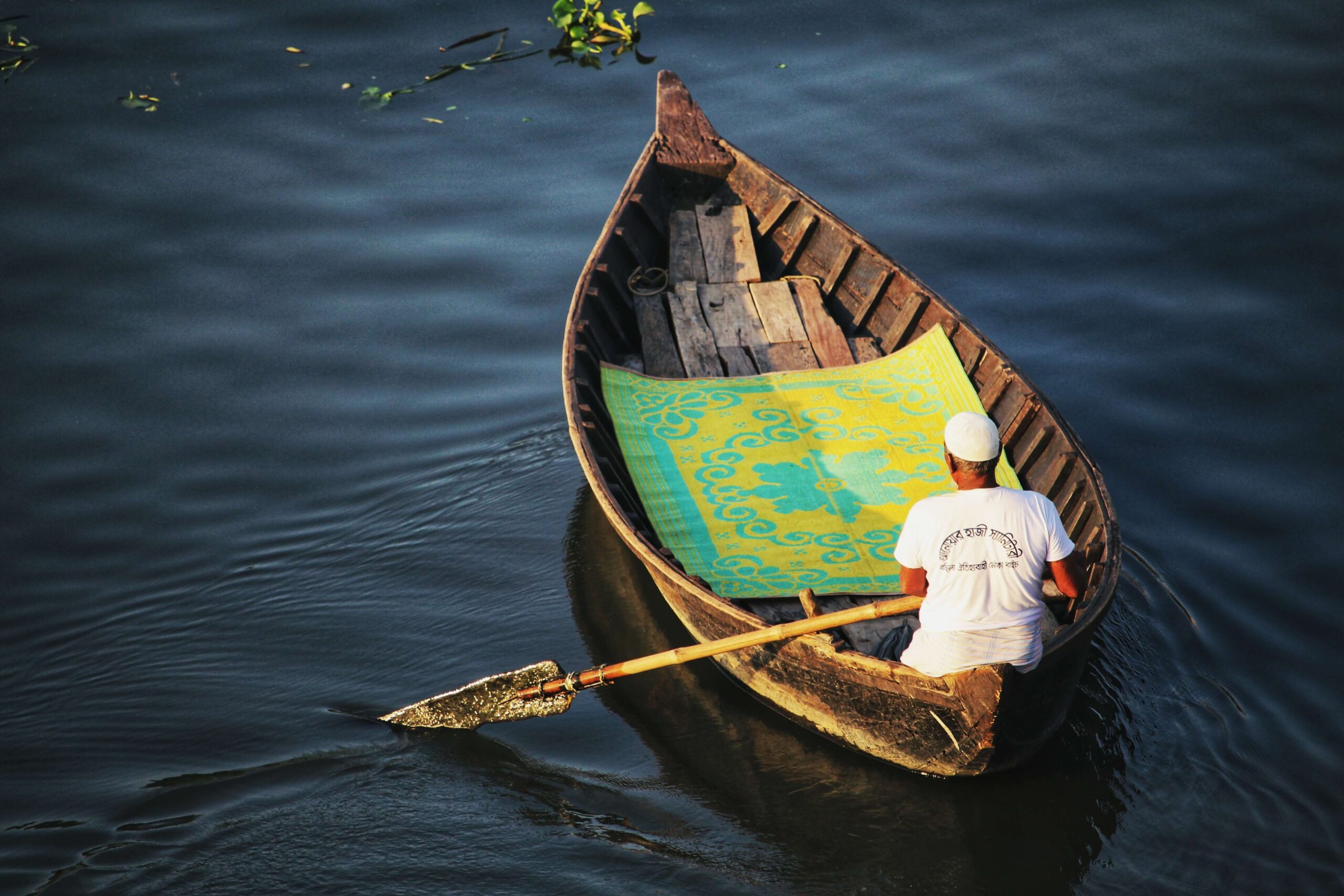
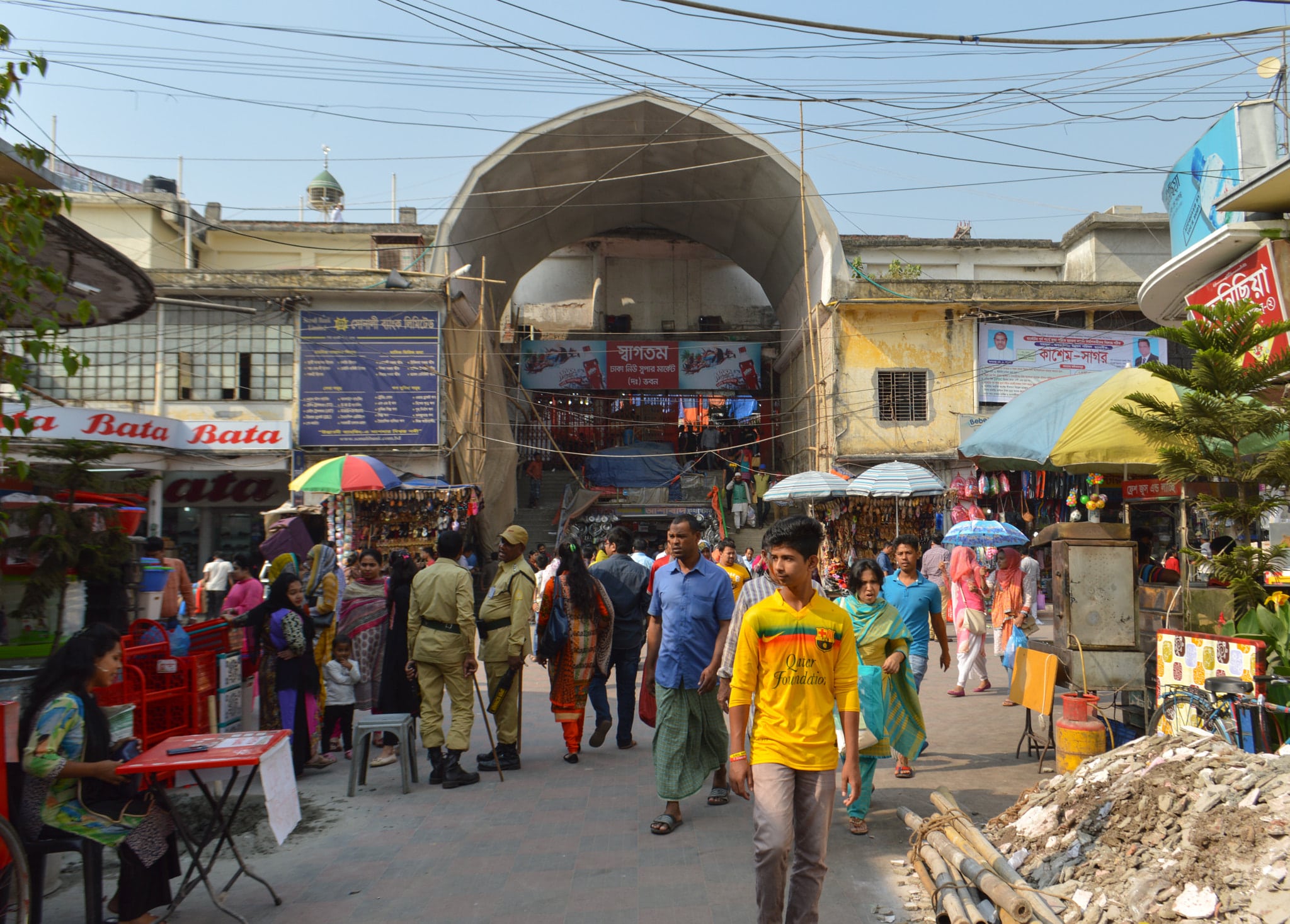
- Backpacker:
- Budget:
- Mid-range:
- High end:
This section will be added shortly.
From the Airport to your accommodation
By Train
By Bus
By Metro
Day 2
Lalbagh Fort
After breakfast, proceed to Lalbagh Fort. This 17th-century ancient fort is a stunning example of Mughal construction, however unfinished, and one of Bangladesh’s most popular tourist destinations. It is made up of three structures: the mosque, the tomb of Pari-Bibi, and the Diwan-i-Aam palace, all of which are surrounded by lovely gardens.
When you’re done with lunch, visit the Liberation War Museum. The museum, which is a must-see, pays honor to the country’s hard-won independence from Pakistan during the Bangladesh Liberation War of 1971. It also recounts the events of the historic Language Movement. The fortitude and perseverance of the Bangladeshi people in the face of genocide and rape will move and inspire you.

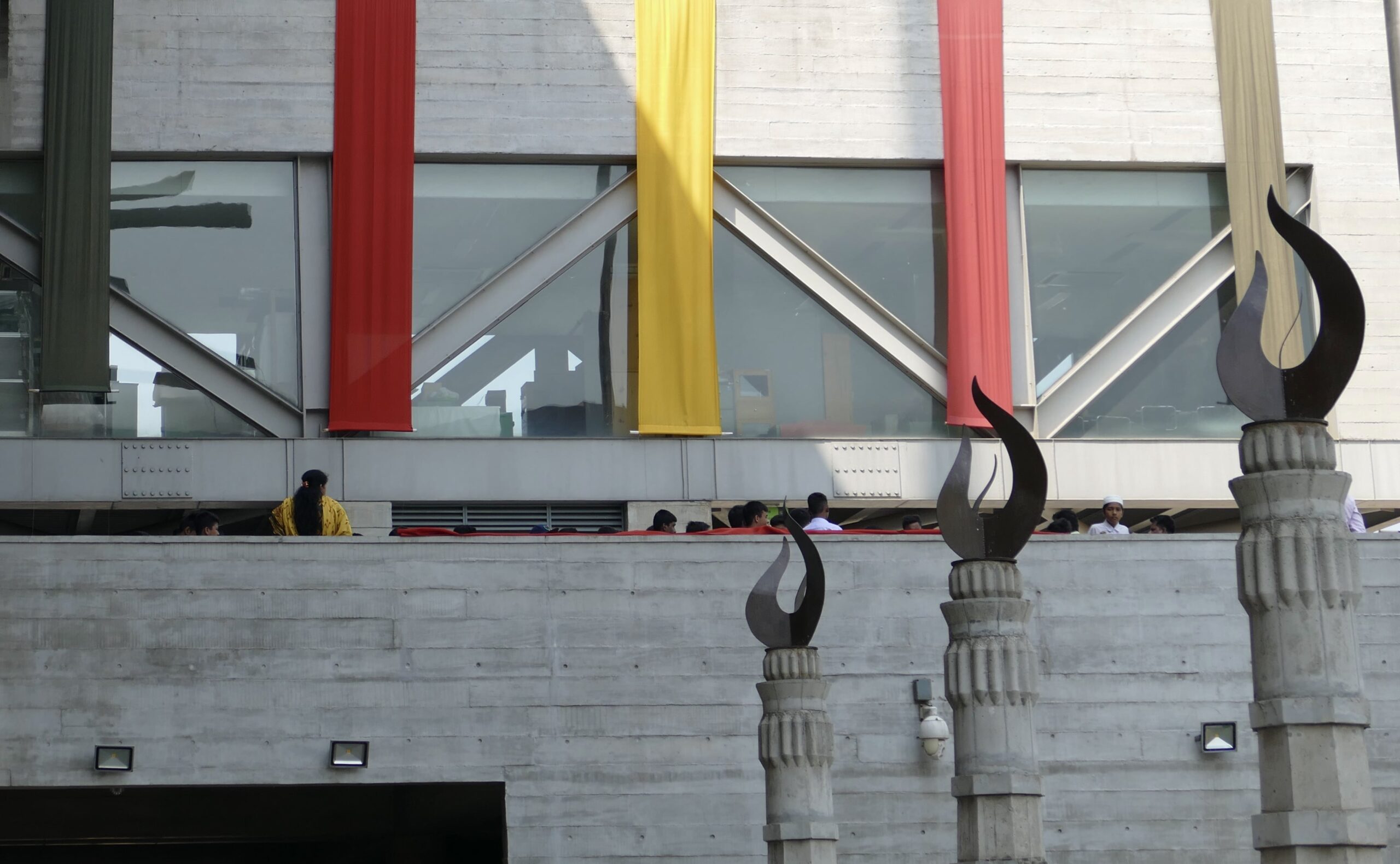
Spend a tranquil evening at the Dhakeshwari Mondir, a Hindu temple within a short distance from the Lalbagh Fort. Dhakeshwari, which means “Goddess of Dhaka,” is the most important Hindu temple in Bangladesh. It was renamed Dhakeshwari Jatiya Mandir in 1966, as a consequence of a push by Bangladeshi Hindu organizations seeking official recognition following the establishment of Islam as the state religion in 1988.
The temple is open every day except Sundays from 2 to 4 p.m.



Day 3
Off to Chittagong
Greater Chittagong covers the southeastern areas of Bangladesh, with a population of around 28 million people. No vacation to Bangladesh is complete without a visit to this region. Chittagong metropolis (Bangladesh’s second-largest city), Chittagong Hill Tracts, and several neighboring districts, notably Cox’s Bazar, are included. A 5-hour drive or a 6-hour bus/train travel from Dhaka to Chittagong metropolis. There are also frequent flights connecting the two cities. If you are traveling by land, depart early in the morning to reach in Chittagong in time for a late lunch.
After a leisurely lunch, a visit to the Aarong Handicrafts Center will be the ideal way to unwind after a long day of travel. Aarong is a retail business that sells one-of-a-kind, high-quality local handcrafted items such as apparel, home goods, jewelry, and accessories.

What distinguishes it is that it is run by the NGO BRAC and employs impoverished rural and marginalized craftspeople, primarily women. Aarong is a one-of-a-kind addition to your list of things to do in Bangladesh, so don’t pass it up. You’ll undoubtedly discover a suitable keepsake and/or present to take home with you.
Enjoy the sunset at Patenga Sea Beach, one of the most popular tourist destinations in Bangladesh, while sampling the different delectable street delicacies on offer. Fried crabs are considered a delicacy locally, and there are several eateries nearby to pick from.
- Backpacker:
- Budget:
- Mid-range:
- High end:
Day 4
Continue Exploring Chittagong
The Bandarban Hill District is one of the most popular tourist attractions in Bangladesh, and with good reason. It is the country’s least populous territory, nestled among the clouds and forests. Bandarban is a perfect day excursion from Chittagong because it is only a two-hour drive away.
There are several things to see and do in Bandarban. To mention a few, popular sites include the Buddha Dhatu Jadi (or Bandarban Golden Temple), Chimbuk Hill, Meghla Parjatan Complex, and Shaila Prapat waterfall. Booking one of the several Bandarban day trip packages available is your best bet. (For further information, contact your hotel.)
Note: Under new regulations, foreigners planning to visit the Chittagong Hill Districts (including Bandarban) must apply at the home ministry at least a month in advance.
The Chittagong Commonwealth War Cemetery honors the numerous troops and citizens who died in World War II. Pay your respects at this solemn yet beautiful memorial to begin your day.


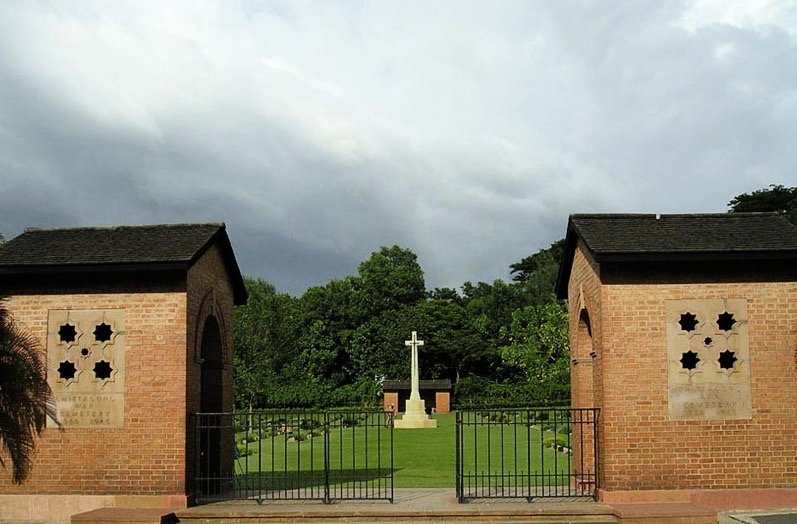


Day 5
Foy’s lake
Foy’s Lake is another prominent attraction on any list of tourist attractions in Bangladesh. The lovely Foy’s Lake is a great place to spend a day, especially if you’re traveling with children. Take a boat ride, visit an amusement park, or have a leisurely lunch by the lake.
Lieutenant General Ziaur Rahman was the founder of the Bangladesh Nationalist Party and the former President of Bangladesh. He was murdered in the Chittagong Circuit Home, a rest house for high-ranking government officials, in 1981. The opulent Circuit House is now home to the Zia Memorial Museum, which pays respect to the revered leader while also commemorating significant events in the country’s history.
Day 6
Head to Cox’s Bazar
Cox’s Bazar’s natural, picturesque splendor has captivated travelers for years, making it a virtually permanent fixture on any Bangladesh itinerary. It is the world’s longest sea beach, stretching for 120 kilometers, and a must-see site for anybody who enjoys coastal life. It’s about a three-hour trip from Chittagong to Cox’s Bazar, and an early start will get you there by lunchtime.
On the journey from Chittagong to Cox’s Bazar, you’ll pass through Ramu, a hamlet with a sizable Buddhist population. Explore the pagodas, temples, and the 13-foot bronze Buddha statue during your visit.

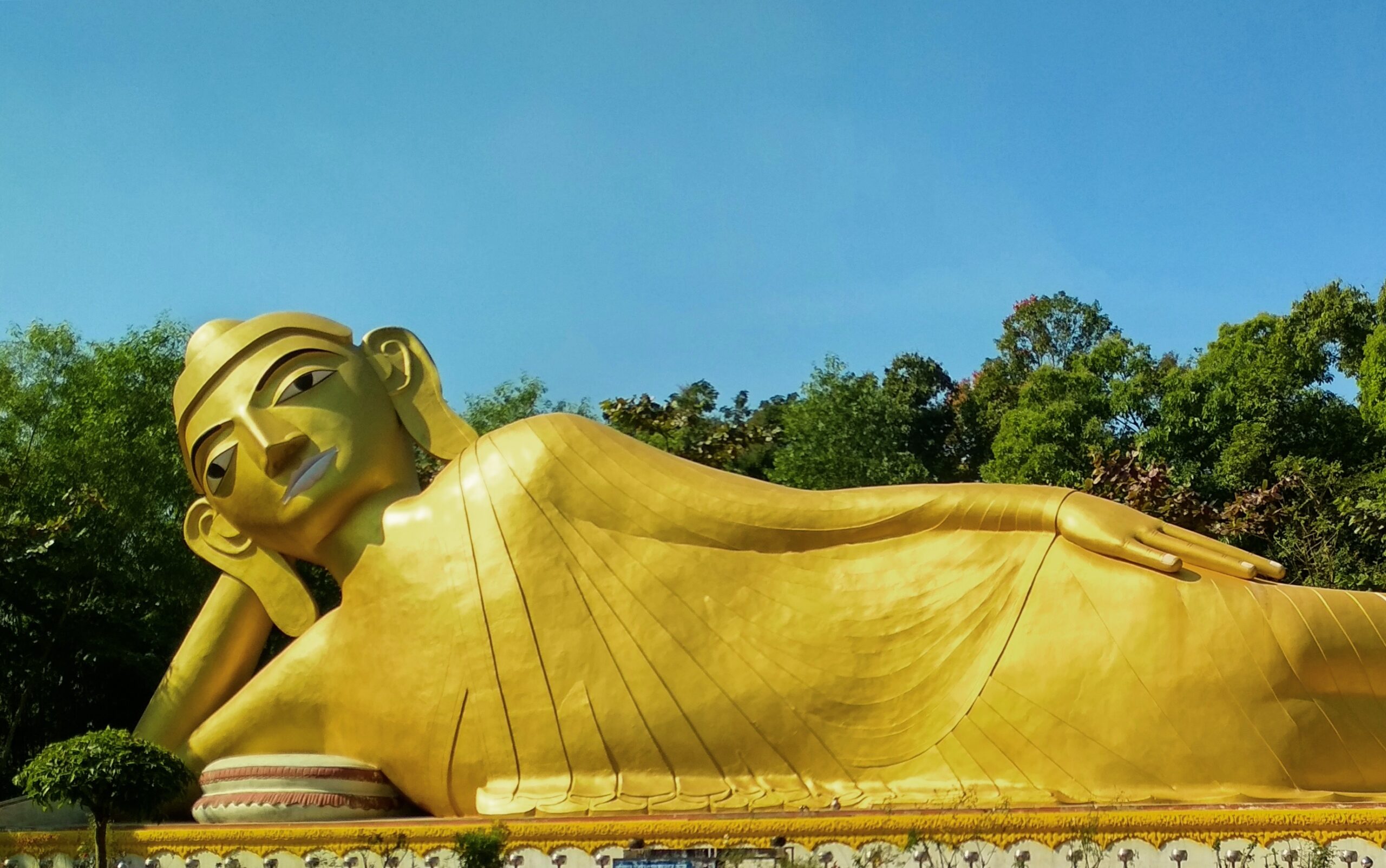
- Backpacker:
- Budget:
- Mid-range:
- Luxury:
This section will be updated shortly.
By Bus
Regular buses leave from Ganja and might take up to three hours depending on the weather.
By Car
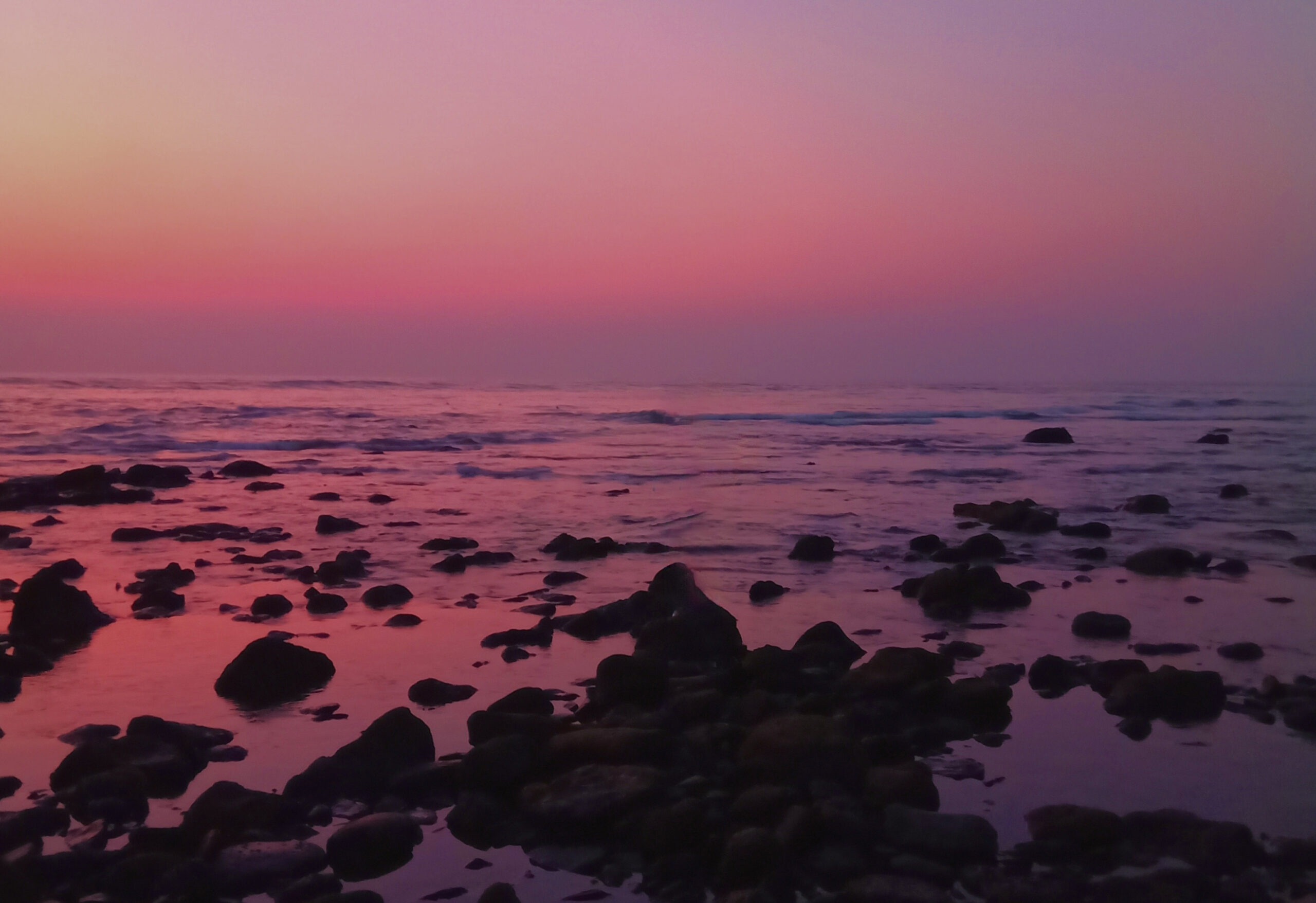

Day 7
Final Day
Laboni Beach is popular among both residents and visitors for its breathtaking dawn and sunset views. Book a drive down the coast from Laboni Beach to the peaceful Inani Beach for an unforgettable experience (around 35 km away). Along the journey, there are several options for action, including surfing, jet skiing, and parasailing.
Before leaving for the airport to fly back to Dhaka and then home, one last shopping trip is in order. The Burmese Market sells a wide range of goods from Burma, Thailand, and China, including sandalwood-based products, handwoven fabrics, and cuisine.
If you have the time don’t miss out on this bustling market.
The Most Popular Food in Bangladesh
Naturally, Bangladeshi cuisine has a lot in common with Indian cuisine, notably Bengali and Northeast Indian cuisine. However, there are some native delights that you must try, such as trying several types of dried fish in Cox’s Bazar. If you like European, Latin American, Mediterranean, or Asian food, there are several places to choose from. Bangladesh has excellent food. Its gastronomy has been shaped by its varied history and unique location. Mughlai cuisine has impacted Bangladeshi cuisine, and various Persian, Turkish, Arabic, and Indian dishes are popular.
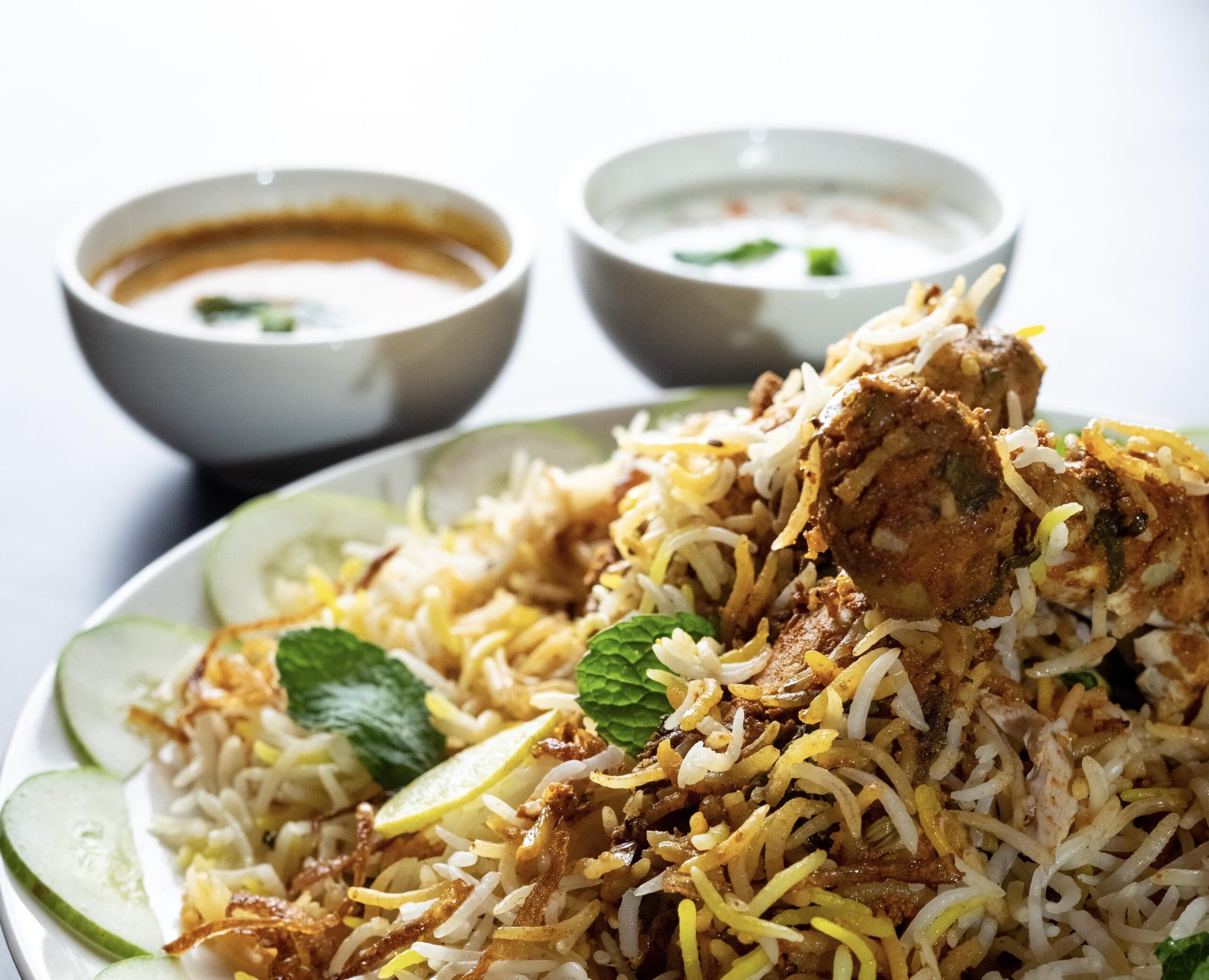
Kacchi Biryani
Dhaka Kacchi Biryani is the most popular biryani among Bangladeshi people. Because of the high demand for this cuisine, the Dhaka street biryani booth is often crowded. The major components are rice and marinated beef cooked in a variety of spices, which give it its distinct flavor. Nutmeg, mace, pepper, cloves, cardamom, cinnamon, bay leaves, coriander, mint, ginger, onion, tomatoes, green chilies, and garlic are the spices. It is occasionally served with a cooked egg and salad.

Morag Polao
Morag Polao is a rich, tasty full plate made with chicken and rice, spices, yogurt, and clarified butter (ghee). Nowadays, oil and ghee are combined to make it less rich. Morag Polao is a delicious and traditional Bengali dish. It’s not hot, and the chicken is light and tasty. Because chicken is used in great quantities, it is a delight for meat aficionados. It is frequently offered on special occasions alongside the traditional yogurt drink Borhani.

Naan
The Naan originated in India, but it is now consumed in most South Asian restaurants and households throughout the world. Today, it has evolved from a basic type of bread for many to creative concoctions by chefs and culinary aficionados with various fillings and flavors. Naan is an oven-baked leavened flatbread that works well with chicken. The bread is a little sweet, and the chicken is a little spicy. This combination gives your tongue a stormy flavor.
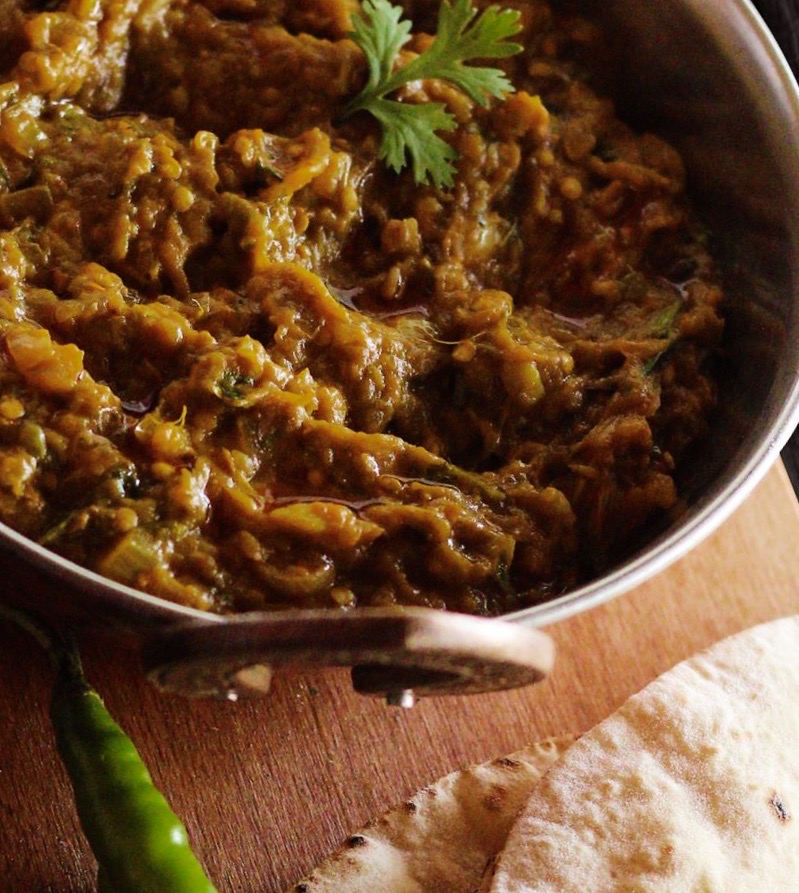
Bharta
Bharta is a Bangla term that means “mashed.” Bharta can refer to any mashed dish, but in Bangladesh, it mainly refers to mashed potato, eggplant, ilish, and dried fish. Other bharta variations include different types of veggies and seafood. Bengali folks often use red or green chili, onion, salt, oil, and other other masala after mashing the ingredients, according on their taste. Bharta cannot be consumed on its own. However, rice, the staple Bengali cuisine, is the only dish that may be eaten with bharta. Bharta is consumed for breakfast, lunch, or before a large meal. In every area of Bangladesh, every restaurant will provide bharta.

Paratha
Paratha is famous not only in Bangladesh, but also throughout the Indian subcontinent. The word paratha is a mix of the terms parat and atta, which both refer to fried dough layers. It’s a flaky, nutritious, and delicious bread made with wheat flour, salt, and olive oil. This breakfast flatbread goes with everything and comes in a variety of flavors. Breakfast is offered with dal, aloor dum, or mutton curry. It can, however, be accompanied by ghee, honey, and sugar.
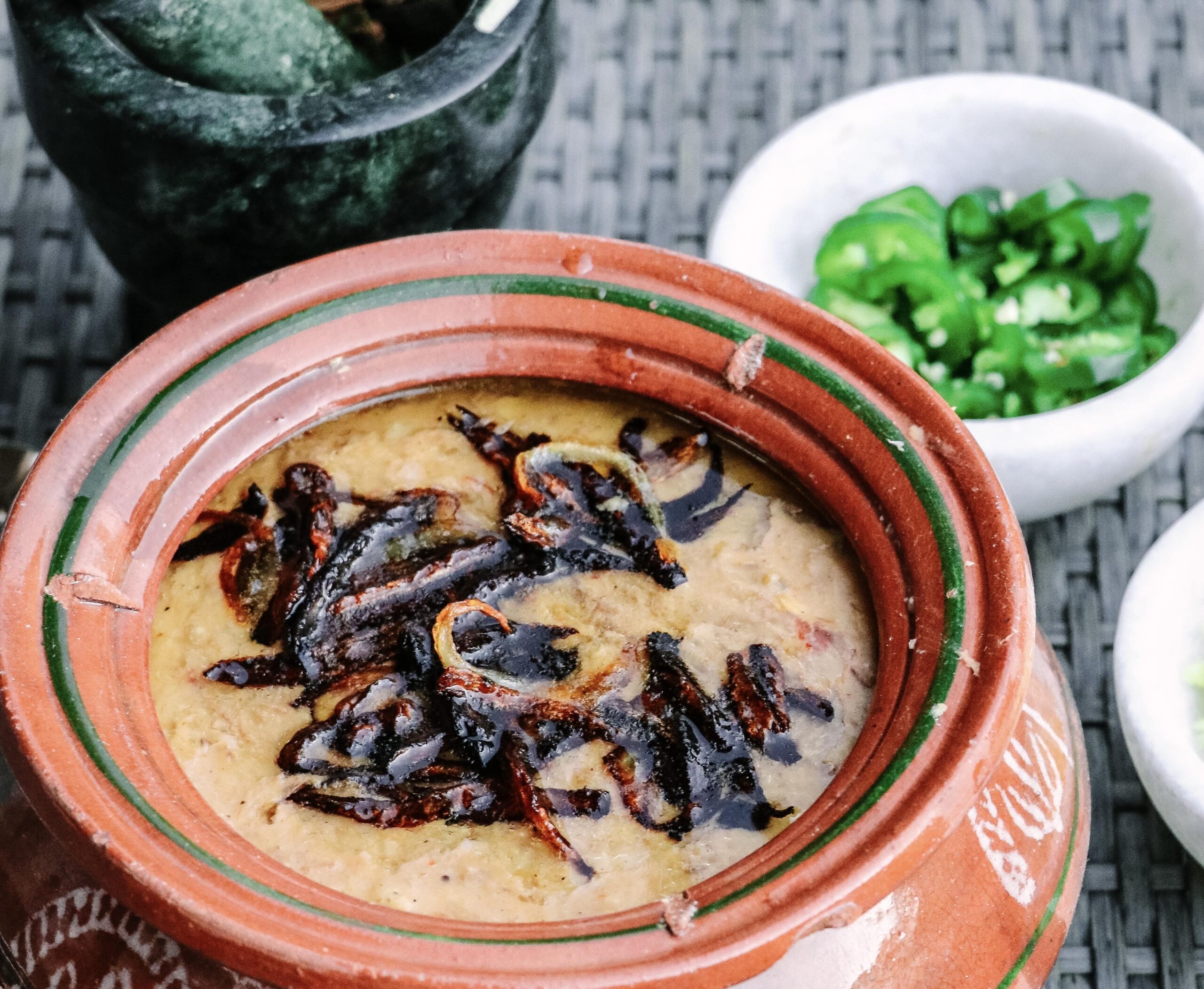
Haleem
Haleem is a traditional Arabic dish. It is a popular stew that is cooked with meat (typically beef or mutton), lentils, barley, and spices. It is offered as a snack on street stalls and in bazaars (markets), and the process of producing haleem is lengthy and difficult. It can be accompanied by mint, lemon juice, coriander leaves, fried onions, ginger root, and green chilies.
What's the Travel Budget for Bangladesh?
Flights
- Flights start at roughly $230 from nearby countries. Tickets however on average cost around $700 and can cost more depending on which class and from which country you depart from.
Accommodation
- Nomad Backpacking style travelers can expect to spend around $120 for a week
- Budget travelers can expect to spend around $250 for a week
- Mid-range travelers can expect to spend around $500 for a week
- Luxury travelers can expect to spend around $900 for a week
Food Budget (Three meals and drinks)
- Nomad Backpacking style travelers can expect to spend around $7 per person per day
- Budget travelers can expect to pay around $16 per person per day
- Mid-range travelers on average would cost $20 to $25 per person per day
- Luxury travelers can expect to pay around $30 to $40 per person per day
Overall Budget Styles (Not including Flights, Tours, Transportation, or Car Rental)
- Nomad Backpacking style travelers can expect to spend around $200 for a week
- Budget travelers can expect to spend around $400 for one person for a week
- Mid-range travelers can expect to spend around $700 for one person for a week
- Luxury travelers can expect to spend around $1250 for one person for a week
Flights
- Flights start at roughly $120 from nearby countries. Tickets however on average cost around $700 and can cost more depending on which class and from which country you depart from.
Accommodation
- Nomad Backpacking style travelers can expect to spend around $400 for a week
- Budget travelers can expect to spend around $600 for a week
- Mid-range travelers can expect to spend around $900 for a week
- Luxury travelers can expect to spend around $3000 for a week
Food Budget (Three meals and drinks)
- Nomad Backpacking style travelers can expect to spend around $20 per person per day
- Budget travelers can expect to pay around $35 per person per day
- Mid-range travelers on average would cost $50 to $60 per person per day
- Luxury travelers can expect to pay around $100 to $130 per person per day
Overall Budget Styles (Not including Flights, Tours, Transportation, or Car Rental)
- Nomad Backpacking style travelers can expect to spend around $600 for a week
- Budget travelers can expect to spend around $900 for one person for a week
- Mid-range travelers can expect to spend around $1400 for one person for a week
- Luxury travelers can expect to spend around $4000 for one person for a week
Flights
- Flights start at roughly $120 from nearby countries. Tickets however on average cost around $700 and can cost more depending on which class and from which country you depart from.
Accommodation
- Nomad Backpacking style travelers can expect to spend around $400 for a week
- Budget travelers can expect to spend around $600 for a week
- Mid-range travelers can expect to spend around $900 for a week
- Luxury travelers can expect to spend around $3000 for a week
Food Budget (Three meals and drinks)
- Nomad Backpacking style travelers can expect to spend around $20 per person per day
- Budget travelers can expect to pay around $35 per person per day
- Mid-range travelers on average would cost $50 to $60 per person per day
- Luxury travelers can expect to pay around $100 to $130 per person per day
Overall Budget Styles (Not including Flights, Tours, Transportation, or Car Rental)
- Nomad Backpacking style travelers can expect to spend around $600 for a week
- Budget travelers can expect to spend around $900 for one person for a week
- Mid-range travelers can expect to spend around $1400 for one person for a week
- Luxury travelers can expect to spend around $4000 for one person for a week
Flights
- Flights start at roughly $120 from nearby countries. Tickets however on average cost around $700 and can cost more depending on which class and from which country you depart from.
Accommodation
- Nomad Backpacking style travelers can expect to spend around $400 for a week
- Budget travelers can expect to spend around $600 for a week
- Mid-range travelers can expect to spend around $900 for a week
- Luxury travelers can expect to spend around $3000 for a week
Food Budget (Three meals and drinks)
- Nomad Backpacking style travelers can expect to spend around $20 per person per day
- Budget travelers can expect to pay around $35 per person per day
- Mid-range travelers on average would cost $50 to $60 per person per day
- Luxury travelers can expect to pay around $100 to $130 per person per day
Overall Budget Styles (Not including Flights, Tours, Transportation, or Car Rental)
- Nomad Backpacking style travelers can expect to spend around $600 for a week
- Budget travelers can expect to spend around $900 for one person for a week
- Mid-range travelers can expect to spend around $1400 for one person for a week
- Luxury travelers can expect to spend around $4000 for one person for a week
If you want to know what to pack, read this list below:
- This is a conservative country that can get extremely hot, dress accordingly
- Raincoat or Light Waterproof Jacket
- Hiking Boots or Sturdy Sneakers (Shoes You Don’t Mind Getting Wet)
- Sunscreen
- Insect Protection – Repellent and Clothing
- Sunglasses and Sun Hat
- Water Shoes
- Beach Towels/Sarong
- Dry Bag
- Money Belt or Cross Bag
- Portable Medical Kit
- Flashlight or Headlamp
- Copies of your passport.
- Get all the needed vaccinations before traveling
- A power bank is a must in any travel.
- Always have some cash with you just in case there are no ATMs and if you are dealing with a business that solely accepts cash
- Get yourself an adapter for your gadgets
- 1 toothbrush
- 1 tube of toothpaste
- 1 razor
- 1 package of dental floss
- 1 small bottle of shampoo
- 1 small bottle of shower gel
- 1 towel
- Deodorant
- Band-Aids
- Hydrocortisone cream
- Antibacterial cream
- Earplugs
- Tylenol
- Hand sanitizer (germs = sick = bad holiday)
- A key or combination lock
- Zip-lock bags
- Plastic bags (great for laundry)
- Universal charger/adaptor
- LifeStraw (A water bottle with a purifier)
- 1 dry shampoo spray & talc powder
- 1 hairbrush
- Makeup you use
- Hairbands & hair clips
- Feminine hygiene products
Clothing For Boys
- 1 pair of jeans or khaki pants
- 1 pair of shorts
- 1 bathing suit
- 5 T-shirts
- 1 long-sleeved T-shirt
- 1 pair of flip-flops
- 1 pair of sneakers
- 6 pairs of socks
- 5 pairs of boxer shorts
Clothing For Girls
- 1 swimsuit
- 1 sarong
- 1 pair of stretchy jeans
- 1 pair of leggings
- 2-3 long-sleeve tops
- 2-3 T-shirts
- 3-4 spaghetti tops
- 1 light cardigan
Want to plan your own trip, here are some of the best resources that can help you
- Skyscanner – They search small websites and budget airlines that larger search sites tend to miss. They are hands down the number one place to start.
- Momondo – This is another favorite flight search engine because they search such a wide variety of sites and airlines. Always check here too.
- Booking.com – The best all-around booking site that constantly provides the most affordable and lowest rates. They have the widest selection of budget accommodation.
- Couchsurfing – This website allows you to stay on people’s couches or spare rooms for free. It’s a great way to save money while meeting locals who can tell you the ins and outs of their city. The site also lists events you can attend to meet people (even if you’re not staying with someone).
- Intrepid Travel – If you want to do group tours, go with Intrepid. They offer good small group tours that use local operators and leave a small environmental footprint.
- Grassroots Volunteering – For volunteering, Grassroots Volunteering compiles a list of good local volunteer organizations that keep the money within the community.
- Get Your Guide – Get Your Guide is a huge online marketplace for tours and excursions. They have tons of tour options available in cities all around the world, including everything from cooking classes, walking tours, street art lessons, and more! It has the world’s largest collection of things to do with more than 30,000 activities in 7500 destinations.
- SafetyWing – Safety Wing offers convenient and affordable plans tailored to digital nomads and long-term travelers. They have cheap monthly plans, great customer service, and an easy-to-use claims process that makes it perfect for those on the road.
- Trip Advisor: Check the reviews and then book your accommodation. TripAdvisor is where you go when you want to compare prices with multiple accommodation providers.
- VRBO: is the main search engine to use when you are looking for a home or apartment rental. It can sometimes be cheaper than hotels and it is the best way to stay in areas that offer a more local feel.
- Hostelworld: With one of the largest databases of hostels in the world, Hostelworld is the go-to site when you are looking for budget accommodation.
- Rome 2 Rio: If you want to see how to get somewhere by plane, train, bus, ferry, or car Rome2Rio lays it all out for you as well as related costs.
- World Nomads Insurance: When traveling you should always have travel insurance. We have found the best bang for your buck is by far World Nomads.
Final Thoughts on Bangladesh
Bangladesh’s history is woven throughout the country, making it a dynamic and picturesque destination worth visiting. From spectacular natural beauty to man-made architectural and artistic marvels. This Asian beauty varies dramatically over its six seasons; you might come year after year to experience the changing landscape and numerous activities on offer! Would you do it?
If you’ve been to Bangladesh let us know how your trip was in the comments below.